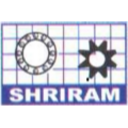Wheat Cleaning and Grading: A Crucial Step for Food Safety and Quality
The Importance of Wheat Cleaning
Eliminating Contaminants: Wheat, from the time it is harvested until it reaches the processing facility, accumulates a variety of contaminants including dust, stones, chaff, and even metal fragments. Cleaning helps remove these impurities, which, if left unchecked, could compromise the integrity of wheat products and pose serious health risks.
Preventing Diseases: Wheat grains can carry pathogens and pests that have the potential to cause diseases. Effective cleaning ensures these harmful organisms are significantly reduced, preventing disease outbreaks that could affect both crops and consumers.
Enhancing Processing Efficiency: Clean wheat minimizes the wear and tear on milling equipment, reducing downtime and maintenance costs. It also ensures that the flour produced is of high quality, free from impurities that could affect its baking properties and taste.
The Role of Wheat Grading
Standardizing Quality: Grading categorizes wheat into different classes based on specific criteria such as size, weight, color, and moisture content. This standardization is crucial for the milling industry to meet the specific requirements for different types of wheat products, from bread to pasta.
Determining Market Value: The grade of wheat significantly influences its market price. Higher grades, indicative of better quality, fetch higher prices, benefiting farmers who invest in quality production practices.
Ensuring Food Safety: Certain grades help identify wheat that’s suitable for human consumption versus that which should be relegated to feedstock. This distinction is vital for maintaining food safety standards and ensuring that only the best quality wheat makes it to the dinner table.
Wheat Cleaning and Grading Processes
The wheat cleaning process involves several steps, each designed to remove specific types of impurities. It typically includes pre-cleaning to remove large foreign objects, followed by intensive cleaning stages that use sieving, air classification, and gravity separation to eliminate smaller impurities and imperfect grains.
Grading, on the other hand, involves assessing the cleaned wheat against established quality criteria. This assessment can be performed manually by trained professionals or through automated systems equipped with sensors and software that analyze grain samples for a variety of quality indicators.
Technological Advances in Wheat Cleaning and Grading
Advancements in technology have significantly improved the efficiency and effectiveness of wheat cleaning and grading. Optical sorting technology, for example, allows for the precise removal of grains affected by diseases or pests, while robotic systems can automate the grading process, reducing human error and increasing throughput.
Making Informed Choices in Wheat Processing
For processors, choosing the right cleaning and grading equipment is crucial. Factors to consider include the capacity of the equipment, the types of contaminants it can remove, its accuracy in grading, and its overall efficiency in terms of energy use and operational costs.
Farmers, too, must make informed decisions about their wheat crops. Selecting high-quality seeds, employing sustainable farming practices, and ensuring proper storage conditions are all steps that contribute to the production of high-grade wheat, ready for the cleaning and grading processes.
The Global Perspective
Globally, the standards for wheat cleaning and grading vary, influenced by regional preferences for wheat products, local agricultural practices, and food safety regulations. However, the underlying goal remains the same: to ensure that wheat, as a fundamental food ingredient, meets the highest standards of quality and safety.
Conclusion
Wheat cleaning and grading are more than just steps in the processing chain; they are fundamental practices that safeguard the quality of one of the world’s most important food sources. By removing contaminants and standardizing quality, these processes ensure that wheat products are safe, nutritious, and consistent. For farmers and processors, investing in efficient cleaning and grading practices is not just a matter of regulatory compliance but a commitment to consumer health and the reputation of their products.
As the demand for wheat continues to grow, driven by a burgeoning global population and expanding dietary preferences, the role of cleaning and grading in maintaining the supply of high-quality wheat becomes ever more critical. Through technological innovation and adherence to best practices, the agricultural sector can continue to meet this demand, ensuring that wheat remains a safe, reliable, and nutritious staple food for generations to come.

